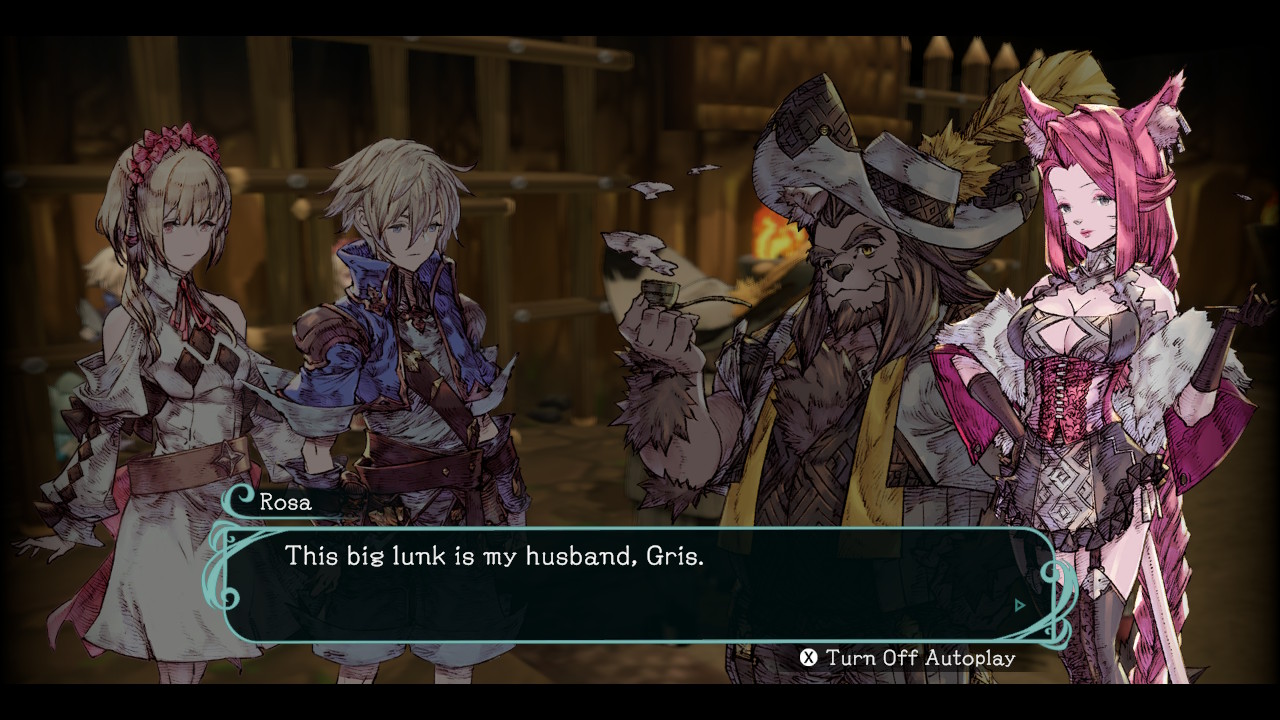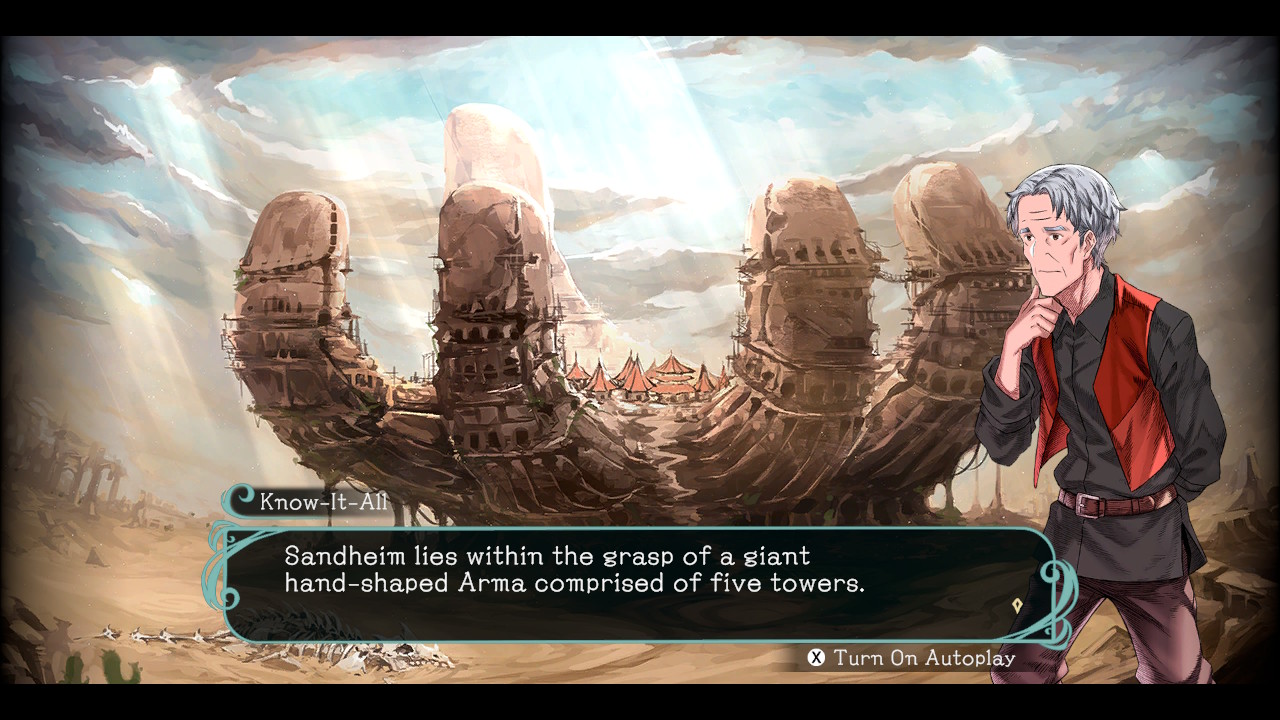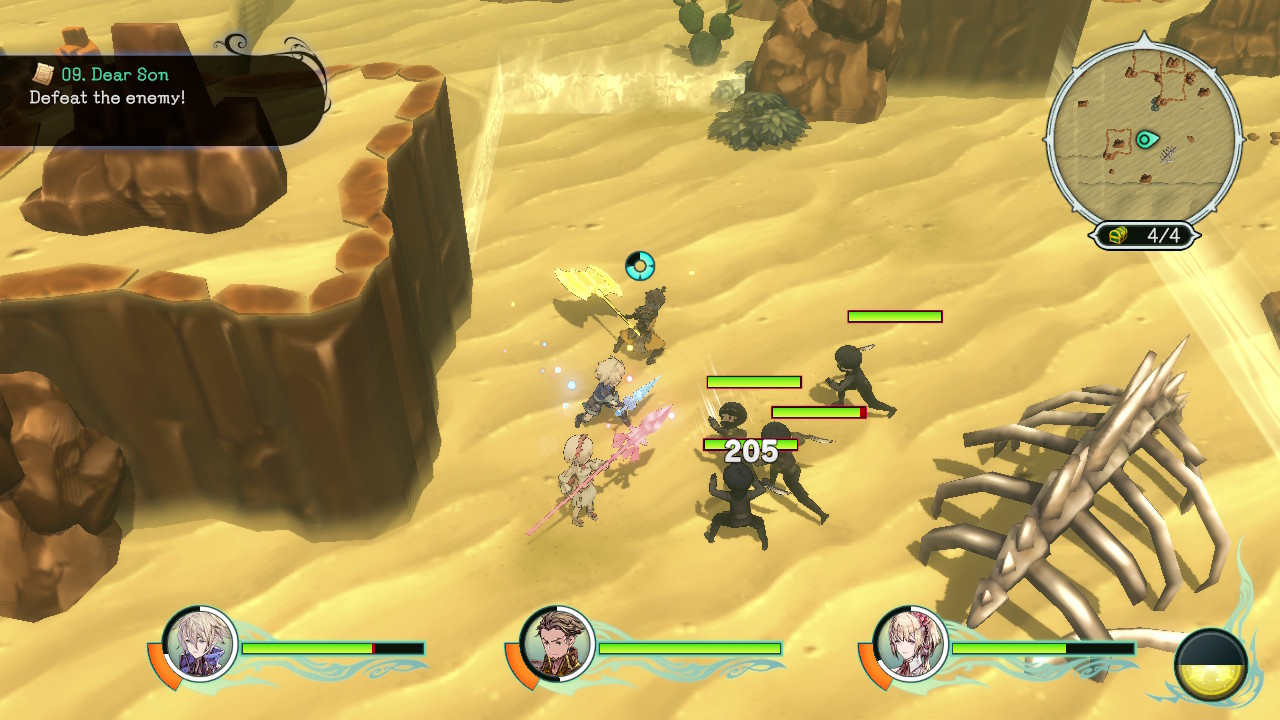Trinity Trigger is the latest game developed by FuRyu and given a Western release by XSEED Games. Conceptually it harkens back to action RPGs of the ’90s, such as Secret of Mana, intending to make the gameplay systems more accessible for modern audiences. We’ve got some big names attached to the development team, with Nobuteru Yūki (Secret of Mana, worldbuilding designer), Raita Kazama (Xenoblade Chronicles, character designer), Yura Kubota (Octopath Traveler, scenario writer), and Hiroki Kikuta (Secret of Mana, composer) bringing some serious creative talent to the game. With the elevated expectations that such a team might inspire, Trinity Trigger isn’t the instant classic I hoped for.
A short but pretty animated cutscene plays when starting a new game. Honestly, I don’t think this cutscene was the best choice to open the game. Despite being well-made, it felt a bit spoiler-y, showing us a situation that the game’s characters know nothing about until much further into the story. You know when a game’s story tries to do a twist, and you groan because the foreshadowing was far too obvious? That.
Following the cutscene, we are introduced to the protagonist of Trinity Trigger: Cyan. He’s a young man who makes a living for himself and his adopted sister, Firn, by excavating local ruins. There’s nothing remarkable about him except that he has a glowing red mark of the God of Chaos in his right eye. The opening sections unfold with Cyan setting out from his town on a short expedition. On his way home, he gets an unsettling feeling, as if he’s being followed. He never actually sees anyone, though, and has no real reason to feel unsafe. Shortly after returning to the safety of his home, he meets Elise. She’s another main character, yet the way they meet and begin their journey feels contrived at best. Elise gives Cyan a flimsy explanation of how he must flee to a neighbouring town to escape assassins. We learn that Cyan is a Warrior of the God of Chaos, and he must embark on a heroic quest to defeat the Warrior of Order, as is ordained. The war between the Gods of Order and Chaos is a time-tested yet ongoing feud, and we’re along for the ride as things heat up for another cycle.

Straight off the bat, one of my main criticisms of Trinity Trigger is the pacing of its narrative delivery. On one hand, the game has some lovely world-building, with a deep mythos of an ongoing war between the Gods and its impact on the world of Trinitia’s landscapes. On the other, the dialogue feels overly reliant on this lore to move things forwards. There are a lot of instances where I wished the lore was more subtly integrated. As it stands, the exposition often interrupts the flow of events by explaining things too much. This was evident from the beginning of the game, with Cyan’s first “threat” being explained through dialogue; he only trusts Elise about the assassins because she knows about the mark on Cyan’s eye. I may be too distrusting, but my stranger-danger radar would not encourage me to pursue this woman. I’d more likely have suspected her of being the dangerous person following me, but it is what it is. I want to clarify that I enjoyed the premise and overarching narrative: the conversations let things down for me.
I immediately loved how similar in style the character models are to those in The Alliance Alive, a personal favourite FuRyu game of mine. The artwork used during character conversations is also very beautifully made. While some characters look a bit similar (there are a lot of blondes), each character is distinctive enough to be memorable. This quality of visuals continues through to the environments. While some areas are a little less memorable than others, the use of colour variation and region-specific details means every area has its own identity.
The voicework adds to how successfully realized each character is, although anyone hoping for dual-language audio will be disappointed. There is an option to auto-advance the text during cutscenes, but what bothered me is that the text is displayed slower than the audio lines. This made cutscenes feel clunkily paced, which is a shame because the voicework overall was very solid. The voicework was a highlight of the dialogue because the writing during cutscenes wasn’t the most engaging of reads.
You’d think an action RPG might have realized the importance of conveying narrative through gameplay in tandem with its cutscenes. However, almost every piece of exposition is delivered strictly through visual novel-esque sequences, albeit with no player input. As I said earlier, these scenes have some beautiful art, but they didn’t have enough impact on me to keep me engaged. Instead, it left me feeling disconnected from the characters and their motivations, with an obvious example being the intro sequences. I get the feeling the developers are experimenting with how they deliver their story content; looking back to The Alliance Alive, that game had a bit more variety with its cutscenes but had no voice acting. In future games, I hope FuRyu can further refine their story segments in a way that works with their budget and resources.
Luckily, Trinity Trigger‘s combat gameplay is its forte. The playable party fills quickly with its Trinity of protagonists and the various mechanics layer from there. Each character has a whimsical mascot companion called a Trigger, and gosh darnit, there we have the name of the game. Ahem. The Triggers can transform into various weapons, from swords and bows to axes and more, with the main driving force of the game being to perform rituals in different Arma to obtain all eight forms. Arma are giant weapons of the gods that fell to Trinitia during the Gods’ war, each one big enough to become bonafide dungeons or even places of residence across the lands. Your party members can switch between weapons anytime by utilising the ring menu, a faithful recreation of the user interface from Secret of Mana.
You’ll need to change weapons regularly if you’re hoping to exploit enemies’ weaknesses, but I found that simply keeping each party member using a different weapon type often covers you for different situations. An enjoyable aspect of the weapons is the customizable chain attacks, in which you can choose between two abilities for three consecutive strikes. I didn’t understand the system at first. I thought it was something to do with the special abilities of each Trigger, but I had a great time when I realized I was in control of how each party member delivered their basic attacks.
Further adding to the customization of each weapon are stats-altering gems called Manatite. Each weapon can equip up to three weapon Manatite and three armour Manatite. There are a few different ways to get ahold of Manatite, such as crafting or finding them, but managing them becomes a little tedious the more weapons you own. If each character has all eight weapons available, with six Manatite slots per weapon, then you’re looking at obtaining and updating 48 Manatite per character. It’s not necessarily a huge burden, and I appreciate the various effects available, but some quick-equip function would have been nice.
A few times, I felt like the environment-specific mechanics were working against me in a way that the developers didn’t intend. For example, while exploring one of the Arma, I had a vexing issue with room boundaries. The exact point where you transition between rooms isn’t displayed, and when pushing back and pursuing enemies, it’s easy to accidentally and unintentionally leave the room. In fact, this isn’t even limited to player error. Even the party members you aren’t actively controlling can force you to leave the room if they are following an enemy and cross these invisible boundaries. I only encountered this issue on very few occasions, the most egregious being a small room filled with chest-mimic enemies, but it was frustrating.
You’ll be doing a fair bit of back-tracking if you want to do all the sidequests, but I never found it particularly tiring. Past areas open up more as you obtain new weapons and meet other requirements. Alongside this, with save points acting as quick-travel destinations, the side content is enjoyable to complete and helps flesh out the worldbuilding of Trinitia. Things like simple fetch-quests give you a look into how the residents live their lives. One quest saw me helping an old man find his eye drops; the light-infused local flora gives him dry eyes, and he wants to read his grandchild a bedtime story. It’s nothing ground-breaking, but these little details show that the devs care about the world they’ve constructed.
Finally, the music throughout Trinity Trigger is consistently nostalgic and often reminded me of Secret of Mana. It’s no surprise, as Hiroki Kikuta worked on Secret of Mana. However, with the aim of Trinity Trigger being to make an accessible yet nostalgic modern game, it was lovely to hear him create this whole new soundtrack without it feeling contrived or too reliant on those ’90s sounds. Despite this, some tracks are less memorable than others, but there are no highs without lows. This general inconsistency left me both feeling satisfied with Trinity Trigger overall, yet still wishing it had done more.
I recommend Trinity Trigger to fans of old-school action RPGs; the combat is fun, the visuals are a delight, and its ambiance is unique. Unfortunately, other areas were either lacking or led to frustration, and I’m not sure if all the design decisions complement each other. My biggest ire is the pacing and delivery of the story; what’s there is fine, but it felt mediocre because I’d lost engagement. However, combat and exploration are the main selling points of this game, so many of you will be able to look past its flaws to enjoy what’s on offer. I wouldn’t go so far as to say it’s a diamond in the rough, but I’ve had less fun with more polished games. It’s a short game, roughly 20 hours, and with more and more people looking for something that isn’t an 80-hour investment, Trinity Trigger is a quick play. I’ll praise it for crafting its own identity and not relying too much on the tropes and gameplay elements from its source inspiration, but don’t expect a modern classic.





